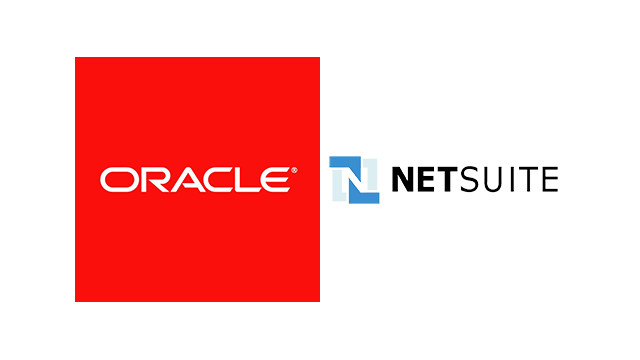— May 10, 2017
It’s my business to understand how companies are bending capitalism towards corporate philanthropy and achieving a triple bottom line in the process. So I was happy to chat with David Geilhufe, Senior Director of NetSuite + Oracle, and learn more about the genesis of the company’s CSR efforts.

Cloud computing software pioneer NetSuite launched its corporate citizenship arm NetSuite.org in 2007 as a vehicle dedicated to supporting capacity-building efforts for nonprofits and social enterprises around the world in furthering their mission with technology. The organization has become a vibrant channel for NetSuite’s creative philanthropic ideas, with its efforts defined by several overall pillars:
- Product donations to over 900 nonprofits and social enterprises to help these organizations run more efficiently.
- A pro bono program that aids organizations which have received a software donation from NetSuite with comprehensive pro bono services from NetSuite employees, with a two-pronged goal of providing skills and expertise to software donation recipients while serving as a skills and team-building experience for employees.
- A volunteer program that engages employees in causes that matter most to them, centered around employee-led teams. NetSuite employees can take advantage of 16 hours of paid time off to volunteer each year.
- An annual Hackathon4Good that taps into the expertise of the NetSuite community to find solutions for nonprofits.
As someone who had long worked in open source communities, Geilhufe knew that one of the best ways that a tech company could help a nonprofit achieve its mission is by applying next generation solutions to the old-school challenges for nonprofits.
But the tricky part, he observes, is that you can’t just take a commercial solution, hand it to a nonprofit and say ‘there you go.’ “There’s a reason that you see a huge nonprofit software industry. People need things customized to their business process. But that software is expensive relative to the technology you actually get.”
Taking a page from Salesforce, NetSuite.org’s leaders observed that if you can build the unique business flow – like fundraising or tracking restricted funds, grants accounting – on top of a commercial system like NetSuite, then you have something interesting and valuable to nonprofits.
I asked Geilhufe about the common mistakes organizations make when starting their CSR programs. He believes it’s related to the inherent tension between the marketing side, the recognition you receive for what you do, and the actual execution of a program. “A lot of times the recognition goes ahead of the doing. You announce a program, you get kudos, talk at conferences, and then dig in and realize that you haven’t actually done what you said you would.”
NetSuite went the opposite route. The company did the work, and then got around to telling people about it. “We released our Pro Bono and Capacity papers three years after the programs started, and two years after they showed good progress in outcomes,” Geilhufe notes. “We had to decide between how to balance style and substance, and held off on sharing the best practices we came to embrace.”
While NetSuite tends to be quiet about its CSR, the company is avid about measuring its impact. And with NetSuite’s acquisition by Oracle in 2016, NetSuite.org became a part of Oracle’s commercial unit, a real business unit. The reason? Usually with acquisitions the first part to disappear is CSR. Oracle and NetSuite’s leadership was on the same page about the aims of this vertical and it became rebranded as Oracle NetSuite Social Impact.
“Oracle has embraced this unit as part of its strategy for going to mid-market or NetSuite cloud service,” Geilhufe notes.
NetSuite has always employed heavy measurement around employee engagement and understanding how programs relate to employees, including participation rates. What the leadership has found is that there’s a direct correlation between participation rates and an individual’s commitment to her job and the company. “Engagement bleeds over to people who didn’t even participate in volunteering,” Geilhufe said. “As long as you’re communicating your program, even people who don’t participate still feel better about being part of the company. There’s a halo effect.”
Geilhufe knows that an effective CSR program doesn’t grow overnight. “Understand who your supporters are, why they’re supporting you, and look for layers of support from the bottom up throughout the organization,” he advises. “Does the executive team understand that your program will have a strong impact on employee engagement? Do they understand employee engagement at all? Can you get one or two of them to sign on to do a project for you? Can you feed them back the data about what happened?”
As an example, Geilhufe ran a bunch of programs around an executive visit to the Netsuite + Oracle offices in Manila. Six months later, what stuck with people the most? “They remembered that so-and-so executive was on a volunteering event and had a chance to build furniture for an orphanage with the chairman of the board,” Geilhufe recalls. “This was very compelling to the support rep who wasn’t going to have an interaction like that otherwise, and it made it easier for executives to interact with the broader community.”
What advice does Geilhufe have for people who are looking to improve their existing CSR program? “Work hard for 10 years, and then be systematic,” he says. “Take ideas from other people, get the job done, you’ll be surprised.”
“We’re very excited about what we built,” he notes. “We’re happy that Oracle is excited too and we have the latitude to work with them and expand.”
Business & Finance Articles on Business 2 Community
(50)